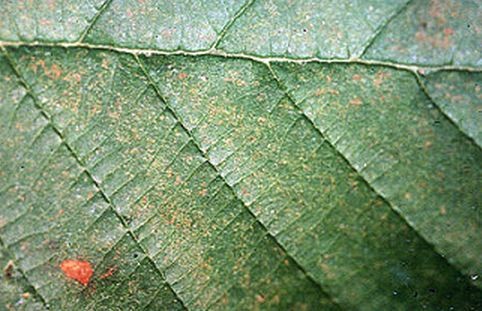World Could be Headed for Crippling Famine by the 2050s
| Arthur Dominic Villasanta | | Jul 30, 2014 03:14 AM EDT |
(Photo : Wikipedia)
The world is headed for a potentially crippling famine by 2050 triggered by growing populations and unabated global warming.
And there's a mounting and little known threat to the world's food supply: ozone pollution.
The world will need 50 percent more food by 2050, mainly because of more people, said a study published in Nature Climate Change, a monthly peer-reviewed scientific journal in the UK.
Like Us on Facebook
The world's ability to produce food, however, may be degraded by climate and air quality changes.
Researchers from MIT and Colorado State University that did the study reported that if everything else stays as it is today, global warming may reduce world crop yields by about 10 percent by 2050.
Their study focused on four major crops: soybeans, rice, maize, and wheat that make up half the calories people consume worldwide.
Ozone pollution is also a grave and rising threat to the world's food supply. The threat to crops comes from ozone precursors, a group of pollutants mostly emitted during the burning of fossil fuels such as coal.
Agricultural production is '"very sensitive to ozone pollution," said Colette Heald, an author of the study and associate professor of civil and environmental engineering at MIT.
This shows how important it is "to think about the agricultural implications of air-quality regulations. Ozone is something that we understand the causes of, and the steps that need to be taken to improve air quality."
She noted that ozone pollution can also be tricky to identify because its damage can resemble other plant illnesses, producing flecks on leaves and discoloration.
The research team calculated that 46 percent of damage to soybean crops on very hot days previously been attributed to heat is actually caused by ozone.
They compared the world in the year 2000 with the world as it is projected to be in 2050.They developed a statistical model of crop yields based on the historical climate and crop data.
The researchers used national crop data from 1960-2000, thereby making a model based on the observed relationships.
In some scenarios, the researchers discovered that pollution-control measures could prevent the worst of the expected crop reductions.
Ozone reduction could reduce a predicted global drop in food production to nine percent from the original 15 percent prediction.
They said implementing regulations limiting ozone emissions might prove to be a practical and preferable alternative to help secure global food production and increase food security.
Long-term exposure to ozone has also been shown to increase risk of death from respiratory illnesses in humans.
©2015 Chinatopix All rights reserved. Do not reproduce without permission
EDITOR'S PICKS
-

Did the Trump administration just announce plans for a trade war with ‘hostile’ China and Russia?
-

US Senate passes Taiwan travel bill slammed by China
-

As Yan Sihong’s family grieves, here are other Chinese students who went missing abroad. Some have never been found
-

Beijing blasts Western critics who ‘smear China’ with the term sharp power
-

China Envoy Seeks to Defuse Tensions With U.S. as a Trade War Brews
-

Singapore's Deputy PM Provides Bitcoin Vote of Confidence Amid China's Blanket Bans
-

China warns investors over risks in overseas virtual currency trading
-

Chinese government most trustworthy: survey
-

Kashima Antlers On Course For Back-To-Back Titles
MOST POPULAR
LATEST NEWS
Zhou Yongkang: China's Former Security Chief Sentenced to Life in Prison

China's former Chief of the Ministry of Public Security, Zhou Yongkang, has been given a life sentence after he was found guilty of abusing his office, bribery and deliberately ... Full Article
TRENDING STORY

China Pork Prices Expected to Stabilize As The Supplies Recover

Elephone P9000 Smartphone is now on Sale on Amazon India

There's a Big Chance Cliffhangers Won't Still Be Resolved When Grey's Anatomy Season 13 Returns

Supreme Court Ruled on Samsung vs Apple Dispute for Patent Infringement

Microsoft Surface Pro 5 Rumors and Release Date: What is the Latest?










